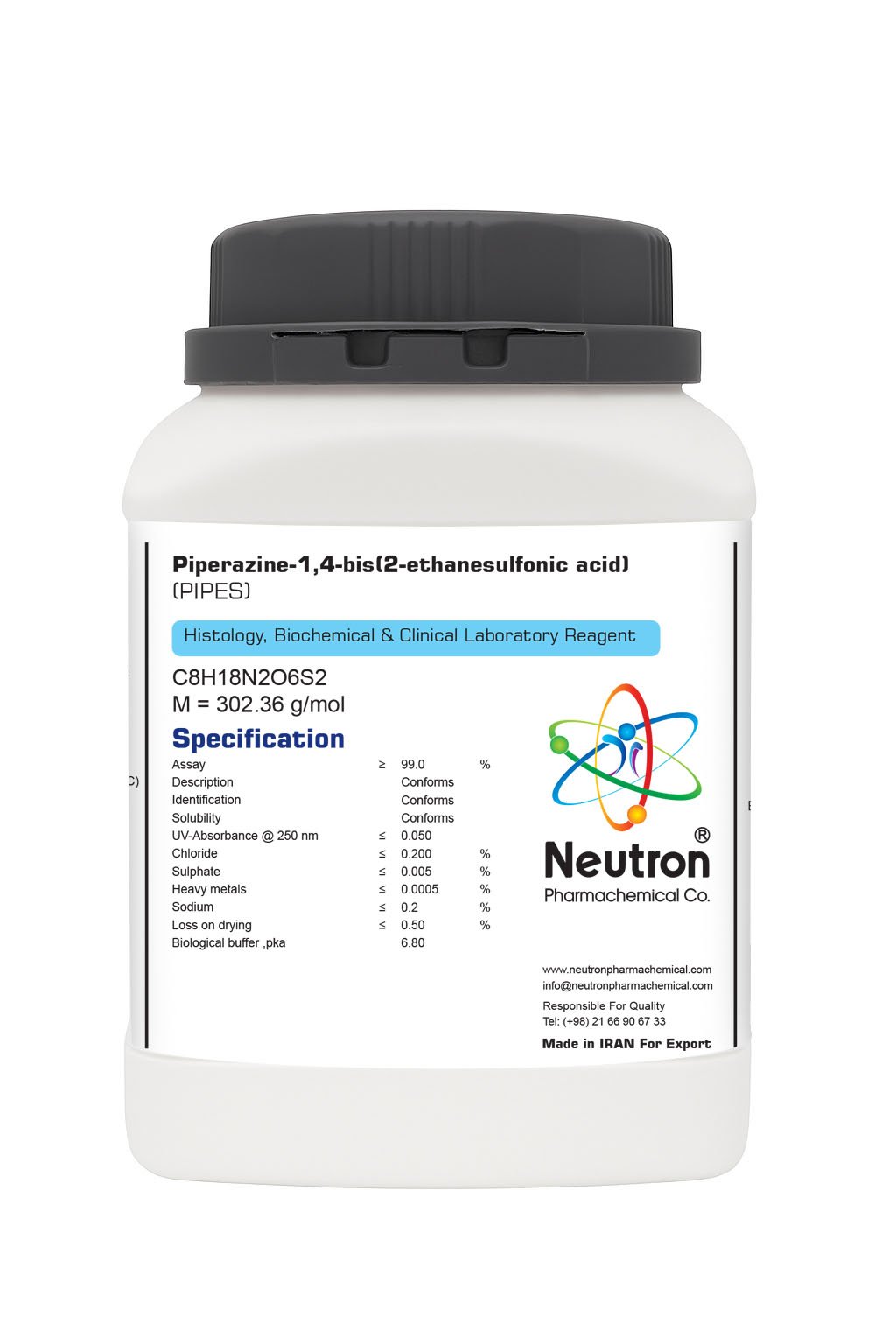PIPES
| Chemical formula | C8H18N2O6S2 |
| Molar mass | 302.36 g/mol |
| HS Code | 29335995 |
| CAS number | 5625-37-6 |
| Storage | Store at +5 to +30 °C |
| EC number | 227-057-6 |
| SDS | available |
| Odour | almost odourless |
| Form | solid |
| Color | white |
| p H value | ~ 2.5 -3.0 (10 g/l 20°C) |
| Solubility in water | slightly soluble |
| Assay | ≥ | 99.0 | % |
| Description | Conforms | ||
| Identification | Conforms | ||
| Solubility | Conforms | ||
| UV-Absorbance @ 250 nm | ≤ | 0.050 | |
| Chloride | ≤ | 0.200 | % |
| Sulphate | ≤ | 0.005 | % |
| Heavy metals | ≤ | 0.0005 | % |
| Sodium | ≤ | 0.2 | % |
| Loss on drying | ≤ | 0.50 | % |
| Biological buffer ,pka | 6.80 |
PIPES (Piperazine-N,N’-bis(2-ethanesulfonic acid)) is a biological buffer widely used in biochemistry and molecular biology. It is a zwitterionic compound that helps maintain a stable pH in a wide range of biological and biochemical experiments, making it an essential component in research involving proteins, nucleic acids, and cellular components.
🏭⚗️ Production
PIPES is synthesized by reacting piperazine with ethanesulfonic acid to form the bis(2-ethanesulfonic acid) derivative. It is commercially available as a white crystalline powder that is highly soluble in water, forming a buffer solution with a pH range ideal for many biological applications.
🔬 Properties
PIPES has the chemical formula C₈H₁₈N₂O₄S₂ and is a zwitterionic compound, meaning it has both positive and negative charges at physiological pH. The buffer range of PIPES is approximately 6.1 to 7.5, making it ideal for maintaining a near-neutral pH in biological and biochemical systems. It is highly soluble in water and does not interfere with most biochemical assays, making it a versatile buffer in laboratory settings.
🧪 Applications
• Cell culture: Used in culture media to maintain pH stability, especially for mammalian cells.
• Protein and enzyme studies: Employed in the stabilization of proteins and enzymes in various biochemical assays.
• Electrophoresis: Frequently used as a buffer in gel electrophoresis, particularly for separating proteins and nucleic acids.
• Biochemical assays: Used in assays to measure enzyme activities or to preserve the activity of cell components.
• Research: Ideal for experiments requiring a pH buffer close to physiological conditions (near neutral pH) such as in the study of cellular processes and molecular interactions.





